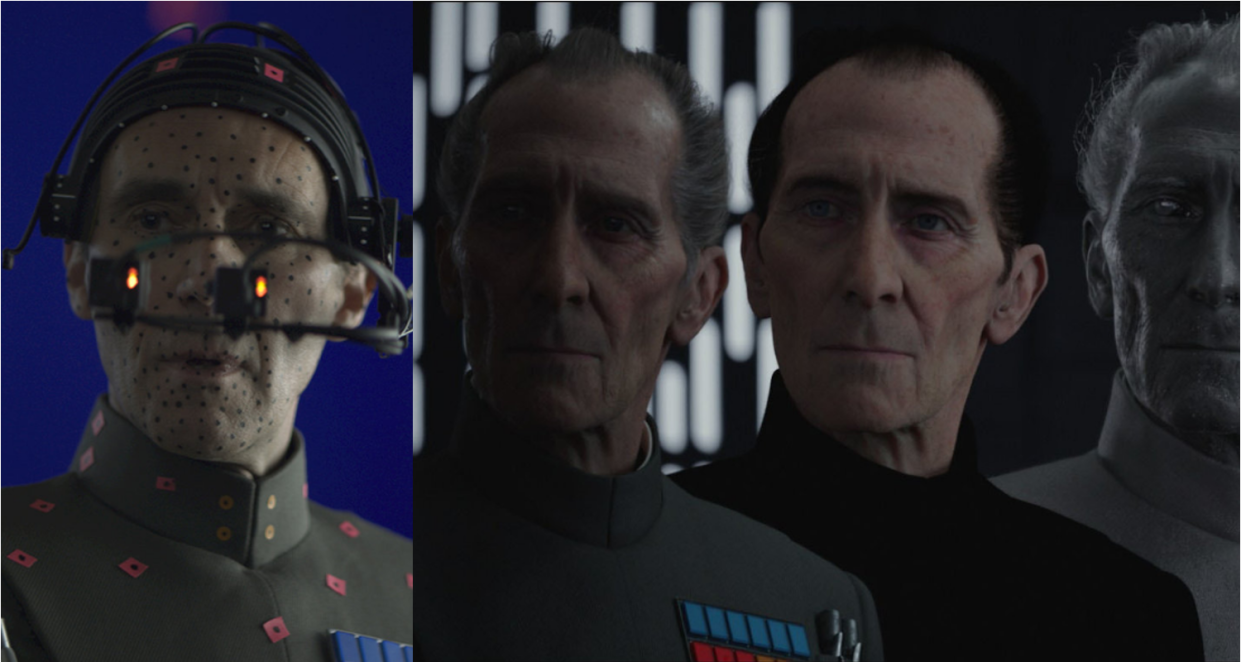Star Wars CGI guru talks ethics of bringing Peter Cushing back to life in Rogue One

The biggest talking point among people who have seen ‘Rogue One: A Star Wars Story’ is undoubtedly the return of Grand Moff Tarkin and how it was achieved.
Peter Cushing played the character in 1977’s ‘A New Hope’ but sadly died in 1994 at the age of 81. In ‘Rogue One’ – set shortly before George Lucas’s film – the character returns with Cushing’s likeness, a feat achieved with CGI.
– The 10 best movie moments of 2016
– Why Rogue One is the perfect Star Wars prequel
– Rogue One composer Michael Giacchino reveals puntastic titles for Star Wars score
While some viewers didn’t notice the use of CGI (I’ve met a few myself), for those conscious of Cushing’s death it proved off-putting – a perfect example of the “uncanny valley” sensation.
There is also the ethical dilemma of posthumously bringing an actor back to life. This, despite Cushing’s estate giving LucasFilm the go-ahead. John Knoll – chief creative officer at Industrial Light & Magic and the film’s visual effects supervisor revealed this an interview with The New York Times, and discussed the process in more detail.
While filming, the part of Cushing was played by ‘Holby City’s Guy Henry (pictured above left), whose performance was used as the basis for the CGI creation.
“We’re transforming the actor’s appearance to look like another character, but just using digital technology,” said Knoll, who added that the process is basically “a super high-tech and labor-intensive version of doing makeup.”
The process involved looking over Cushing’s performances in ‘A New Hope’ and other films and recreating his tics and traits. For example, Knoll explains: “When Peter Cushing makes an ‘aah’ sound, he doesn’t move his upper lip. He only opens his jaw about halfway, and makes this square shape with his lower lip, that exposes his lower teeth.”
The biggest problem many have with it however, is more ethical than technical. Will this open the flood gates for more studios to, essentially, re-animate deceased actors?
“I don’t imagine that happening, Knoll said. “This was done for very solid and defendable story reasons. This is a character that is very important to telling this kind of story. It is extremely labor-intensive and expensive to do. I don’t imagine anybody engaging in this kind of thing in a casual manner.
“We’re not planning on doing this digital re-creation extensively from now on,” Knoll added. “It just made sense for this particular movie.”
Knoll also discusses another moment of CGI magic at the end of the film, but for the sake of spoilers we’ll suggest reading the rest of NYT’s article here.


 Yahoo Movies
Yahoo Movies 

